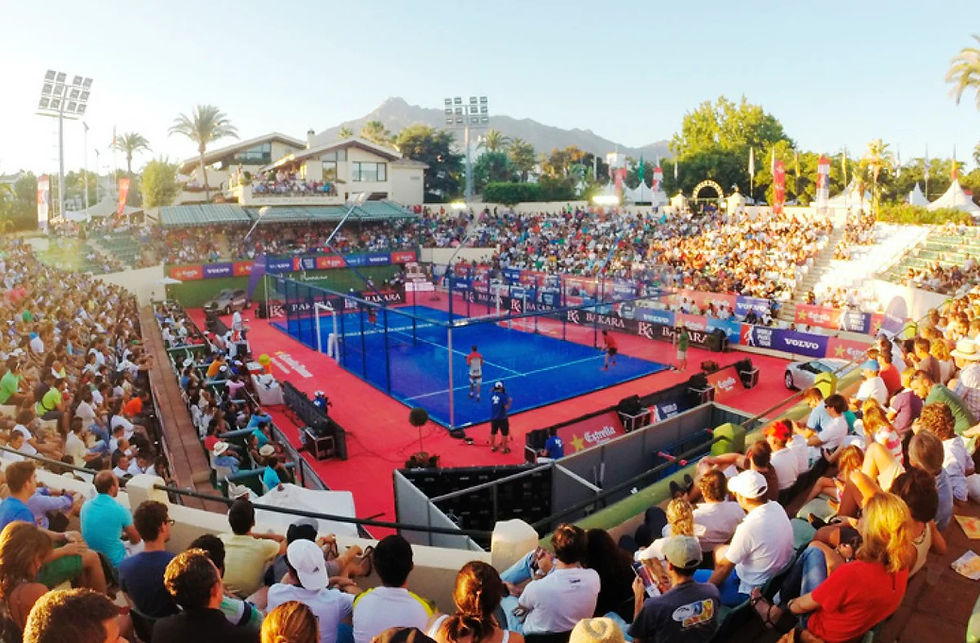The Social, High-Energy Sport Reshaping Active Lifestyles
- support67379
- Nov 15
- 3 min read

Padel has rapidly shifted from a niche pastime to one of the fastest-growing sports worldwide. What’s driving this surge? A mix of accessibility, community appeal, smart infrastructure, and perfect timing—and athletes everywhere are taking notice.
One of the biggest reasons people are flocking to padel is how easy it is to learn. The smaller court, simpler rules and faster pace mean beginners can rally within a few minutes of picking up a racket. Yet despite being beginner-friendly, the sport still offers depth for competitive athletes. Strategy, teamwork and technique all play a major role, which means there’s always something to refine once you’re hooked.
But padel’s rise isn’t only about playability—it’s also about connection. Because the game is almost always played in doubles, it naturally becomes a social experience. Clubs around the world have tapped into this by positioning themselves not just as sport venues but as lifestyle hubs where people come to train, hang out, and enjoy the club atmosphere. The social buzz is a big part of what keeps players coming back.
Another appealing factor is that padel offers a lower-impact alternative to many high-intensity racket sports. Players still get a demanding workout—agility, coordination, reflexes—but with less stress on the joints. For athletes who want to stay competitive while protecting their longevity, this balance of intensity and sustainability is a major win.
The sport’s infrastructure boom has also accelerated its growth. Courts are being built at a staggering rate worldwide, and because a single tennis court can be converted into several padel courts, facility owners are jumping at the opportunity. More courts mean easier access, shorter wait times, and more players in circulation.
Visibility has skyrocketed too. High-profile athletes, celebrities, and influencers have embraced the sport, bringing massive media attention with them. Professional tours and broadcast deals are expanding, pushing padel beyond casual recreation and into the realm of serious competitive sport.
All of this coincides with a broader shift in how people want to stay active. During and after the pandemic era, players gravitated toward outdoor, social, low-contact sports—a trend that hasn’t slowed. Younger audiences and urban communities now gravitate toward activities that blend fun, fitness and community. Padel fits that cultural moment perfectly.
A Quick Starter Guide for Athletes
If you're considering jumping into padel, getting started is straightforward. Begin by finding a local club—many tennis and racquet facilities now offer padel courts—and book a beginner session. You’ll learn the key differences from tennis: the enclosed court, the use of the walls, the under-arm serve and the fast, reactive style of play.
Next, gear up with the basics: a padel racket (solid-faced and shorter than a tennis racket), proper padel balls, and supportive shoes with good lateral grip. Comfortable, breathable athletic clothing will help you move explosively. If you get more serious, you may want extras like wristbands, gloves or protective eyewear.
As you build your skills, focus on the fundamentals: serves, volleys, wall rebounds, and quick positioning. Doubles strategy is central to the sport, so communication and awareness of your partner’s movements are essential. Agility drills and reaction training can give athletes a natural edge.
It also helps to join a beginner group, league, or regular playing circle so you get consistent matches. Many clubs offer structured training blocks tailored to performance-oriented players, and apps or club networks can connect you with others at your level.
Finally, set simple goals for your first season—improving rally length, learning smarter court coverage, and becoming a more cohesive doubles partner. Mix social play with competitive opportunities such as club events or local tournaments. With padel growing worldwide, chances are you’ll find plenty of places to test your skills as you progress.
Final Serve
Padel is more than just the next racket sport—it’s a movement. It’s social, accessible, high energy, and rapidly building global momentum. For athletes who want to stay sharp, connect socially, and ride the wave of a sport on the rise, this is your moment.
Grab your racket, book your court, find your doubles partner… and get ready to rally into the future of sport.



Comments